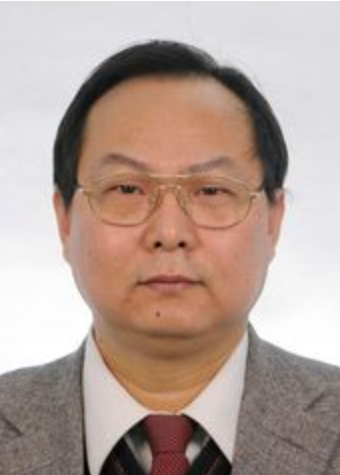Pursue Quality and Depth in Resource Revitalization
Interlocutors:
Liu Gang, Director of the Nankai Institute of Economics, NKU
Yan Li, Commentator

Within the existing stock, there lies space and potential for development, as well as cultural value and social benefits. As long as we can activate these resource stocks through reform and innovation, the quality, business forms, and functions of the city will be further enhanced.
Yan Li
Urban development is usually accompanied by extensive and diverse types of stocks, encompassing both tangible resources and intangible assets. Effective utilization of these resources is vital for fostering high-quality development and materializing a desirable lifestyle, while also making the charm and character of a city truly shine.
Liu Gang
I agree. City development resembles an ongoing process of integration and optimal utilization of resources and assets. To a certain extent, any resources that have not been utilized efficiently may be further activated. This includes unleashing the potential of idle resources, such as land and properties, through various methods. Similarly, the in-depth exploration of cultural resources and the creation of high-quality cultural products also constitute a form of activation. However, the existing stock, regardless of its type, cannot be used indiscriminately without careful consideration on how to achieve maximum utilization. It is crucial to revitalize it wisely, seeking to enhance its technological value and improve the input-output ratio, ultimately increasing the overall benefits. The transition from stock to increment, along with the positive cycle of creating new economic drivers, enriching cultural offerings, and enhancing citizen well-being would promise favorable city development and help bring out its full potential.
Yan Li
The activation and effective utilization of resources depend on innovative policies and new mechanisms. For instance, the small Western-style buildings in the city have been properly revitalized by establishing a robust service system for attracting investment and facilitating occupancy. This targeted approach has successfully attracted relevant industries, achieving the dual objective of promoting production through buildings while fostering building development through production. In your opinion, how can reforms be utilized in the effort to put stock into good use?
Liu Gang
Activating resources necessitates more efficient allocation, the removal of old constraints, the integration of new business forms, the adoption of advanced technologies, and the establishment of innovative mechanisms. Tackling the challenge of inadequate utilization of the existing stock is an urgent priority for the development. Customizing distinct policy mechanisms to align with the diverse types and ownership structures of the stock represents a form of reform in itself. After addressing the longstanding issues related to the stock, the next and more important step is to identify which new “initiatives” should be introduced. On the one hand, we need to consider the fundamental attributes of the stock; on the other hand, we need to take into account the regional industrial resource endowments. The creative integration of these two aspects will lead to new industries, new business forms, and new content, resulting in a greater supply of products and services that align with market demand. This approach will ultimately foster an increment that stimulates economic vitality and boosts domestic demand. This approach embodies a reform-oriented mindset, demonstrating the pertinence, precise, and effective nature of reform initiatives.
Yan Li
Adding a splash of culture to the existing stock also makes a good choice. Recently, the former site of the Second Workers' Sanatorium of the Tianjin Municipal Trade Union, which had been idle for nearly 20 years, underwent a comprehensive activation. The project not only preserves its unique architectural features but also introduces cultural, artistic, and industrial service initiatives. This blend of culture and economy expands the ideas and approaches for activating the stock.
Liu Gang
Yes, indeed. Much of the stock constitutes historical and cultural heritage. It is vital to thoroughly develop its historical and artistic value and transform it into factors of production and drivers of development, thereby generating new productive forces. In Tianjin, many stock assets are labeled as industrial culture. Take the former Tianjin No. 4 Rubber Factory, it has been transformed into a creative industrial park based on its industrial culture and has introduced initiatives such as architectural design and urban planning. These initiatives include industry salons tailored for professionals and art venues intended for the general public. The coexistence of the public attributes and economic value of cultural space offers individuals a multifaceted sense of beauty and experience. This reinforces the notion that culture empowers the economy and the economy activates culture in return. By doing so, the city's charm and distinctive style will be highlighted.
Yan Li
Activating stock represents not only a cultural challenge but also a public welfare concern. We may have noticed that some vacant plots of land adjacent to subway stations have been transformed into smart parking lots, while some previously idle community spaces have been repurposed as fast charging stations for vehicles and shared drying areas. Such effective utilization of underutilized spaces can foster incremental development and enhance residents' sense of gain.
Liu Gang
The activation of the stock should align with the needs of the people. It is not merely a transformation of space; rather, it is about aligning function with demand and promoting a synergy between livelihood and development. We can integrate technology into the stock resources to make public service available to more, and transform these assets into catalysts for green living and improved social security. For instance, some idle buildings have been repurposed to accommodate renowned comedy theaters, creating vibrant connections with nearby restaurants, coffee shops, and bars, thereby enriching forms of consumption. Additionally, some vacant plots of land have been transformed into night markets that combine cultural tourism, food consumption, and entertainment activities. By addressing the diverse needs of people, we can identify the direction and methods for activation. This approach allows us to unlock the potential of the stock to enhance people's livelihoods, which is intrinsically linked to incremental development. The interplay between these two elements would help secure a better future for the city.